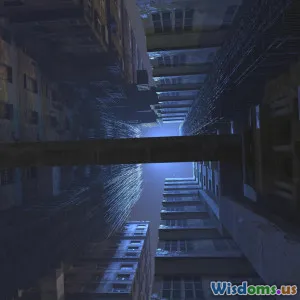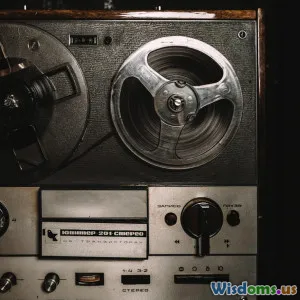
Why Rocky Horror Survived Hollywood Rejection
7 min read Explore how Rocky Horror defied Hollywood rejection to become a cult classic through fandom, uniqueness, and cultural impact. (0 Reviews)
Why Rocky Horror Survived Hollywood Rejection
Introduction
Few films have defied Hollywood’s traditional success metrics like The Rocky Horror Picture Show. Released in 1975, this bizarre blend of horror, sci-fi, and musical elements failed to impress initial critics and studios alike. Yet, despite industry skepticism and commercial underperformance in conventional terms, it evolved into one of the longest-running cult classics in cinematic history. How did a movie dismissed by Hollywood not only survive but thrive? This article explores the multifaceted reasons behind Rocky Horror’s endurance, examining how fan culture, innovative marketing, and its reflection of countercultural values transformed rejection into an enduring legacy.
Hollywood’s Rejection: Context and Reasons
To understand the film’s survival, it’s crucial to first examine why The Rocky Horror Picture Show was initially rejected by Hollywood gatekeepers.
1. Atypical Genre Fusion
In the mid-70s, Hollywood favored genre films that fit neatly into categories: horror, musicals, comedies, or dramas. Rocky Horror combined elements of sci-fi, horror, rock musicals, and campy comedy — an experimental concoction that resisted easy classification. Studio executives found the film risky, unable to confidently market its unusual blend, which contributed to its poor initial theatrical release.
2. Controversial Themes and Subversion
The film’s open celebration of sexual fluidity and queer identity was far ahead of its time in 1975. Studios worried that its overt LGBTQ+ themes, camp, and sexual freedom would alienate mainstream audiences and provoke backlash, especially during a period when Hollywood generally sanitized or ignored these narratives.
3. Mixed Critical Reception
Early reviews ranged from baffled to dismissive. Prominent critics found the film disorganized or grotesque, failing to appreciate its camp and satire. This disdain influenced theater chains and distributors, limiting its screen presence.
The Cult Phenomenon: How Fans Resurrected Rocky Horror
Rather than fading into obscurity, The Rocky Horror Picture Show blossomed into a vibrant cult phenomenon, driven largely by its fiercely dedicated fan base.
1. Midnight Showings and Audience Participation
Key to its revival were the midnight screenings that started cropping up organically in urban cinemas. Here, the audience didn’t just watch; they engaged directly with the movie. From shadow casting—fans performing roles in sync with the film—to call-backs and props like rice, toast, and water pistols, the movie became an interactive experience. This participatory aspect fostered community and repeated viewings, increasing its cultural footprint.
2. Building a Countercultural Tribe
The film’s themes of nonconformity, sexual liberation, and challenging societal norms naturally attracted marginalized and countercultural groups. LGBTQ+ communities embraced Rocky Horror as a bold representation of queer identities during a period of limited visibility, reinforcing its status as more than entertainment—a symbol of acceptance and freedom.
3. Grassroots Marketing and Word of Mouth
Without the backing of major Hollywood promotions, Rocky Horror depended on grassroots efforts. Fan clubs, zines, and lively interaction in clubs and bars helped spread its mythos. The film’s tactile, immersive nature encouraged viewers to share and return, fueling a slow-building yet unstoppable momentum.
The Role of Unique Distribution and Longevity
1. Niche Cinema Circuits
While initial wide releases were tepid, niche art-house cinemas and repertory theaters capitalized on screening the film repeatedly. Instead of fading away, Rocky Horror gained ongoing exposure that traditional venues denied it.
2. Soundtrack Success
The soundtrack, featuring catchy songs like “Time Warp” and “Sweet Transvestite,” achieved significant popularity independent of the film itself. This widened its audience beyond initial viewers and became a staple in dance clubs, further embedding the movie in pop culture.
3. Home Video and Cultural Revival
By the 1980s, the rise of VHS allowed newer audiences to experience Rocky Horror beyond theaters. Coupled with ongoing midnight showings, this ensured multi-generational appeal and continuous cultural relevance well beyond Hollywood’s initial timeline.
Legacy and Continued Impact
Today, over 45 years after its release, The Rocky Horror Picture Show remains a unique artifact of pop culture. It inspires similar audience participatory events, influences music, fashion, and LGBTQ+ representation. It also serves as a blueprint for how films rejected or underestimated by studios can leverage fandom and cultural authenticity to endure and thrive.
Conclusion
The Rocky Horror Picture Show survived Hollywood rejection by defying norms on every level—from its genre-bending story and provocative themes to the innovative fan interactions that resurrected it. The film’s success story challenges traditional industry perspectives on what makes a movie successful, underscoring the power of community, identity, and cultural resonance. In an era where Hollywood often prioritizes formulaic blockbusters, the legacy of Rocky Horror stands as a testament to the unpredictable magic born from authentic connection and bold eccentricity.
References & Further Reading
- Russo, Vito. "The Celluloid Closet," 1981.
- Pender, Andrew. "50 Years of Cult Cinema," 2018.
- Time Out New York. "The enduring cult of Rocky Horror," 2015.
- Box Office Mojo, Rocky Horror Picture Show Data.
- Variety archives on 1970’s film releases.
Embrace your inner stranger, because in the world of Rocky Horror, it’s perfectly fine to be a little bit different.
Rate the Post
User Reviews
Popular Posts


















